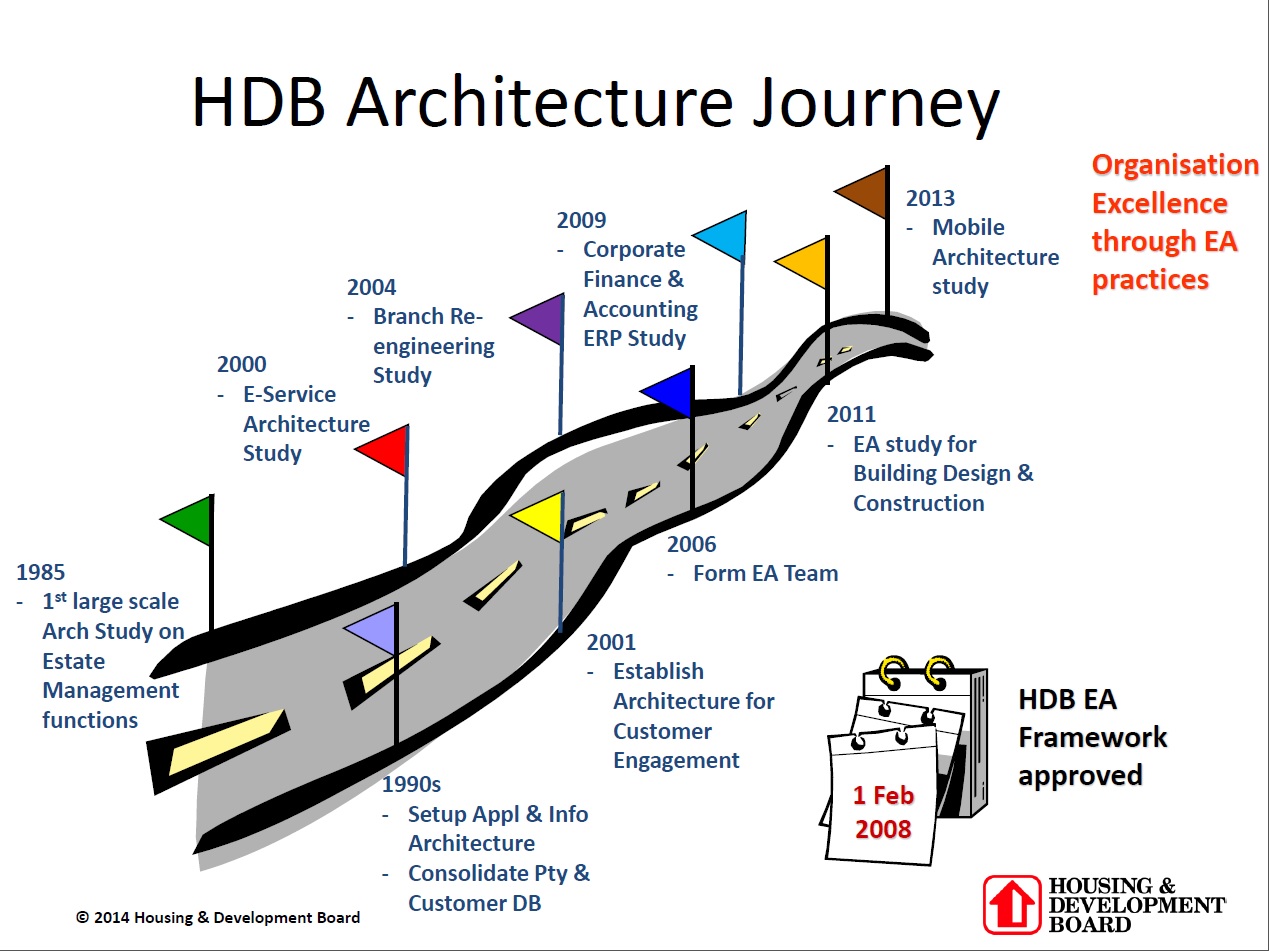Housing & Development Board’s Principal Systems Analyst, Ms Lim Choo Heok, shares useful tips, lessons learned and best practices for organisations considering an EA journey of their own.
Housing & Development Board (HDB) is Singapore’s public housing authority and a statutory board under the Ministry of Development. Since its creation in 1960, HDB has successfully overcome the complex challenges of housing a rapidly expanding metropolitan nation. Its mission is to provide affordable homes of quality and value, create vibrant and sustainable towns, and promote the building of active and cohesive communities.
HDB has established an enterprise architecture (EA) to ensure that its information and communications technology initiatives were aligned with its corporate goals and business strategies. Implementing the EA programme improved its ability to meet the housing needs of a diverse and growing citizenry, eliminated inefficient and redundant processes, and increased its productivity while managing costs.

Ms Lim Choo Heok, Deputy Team Lead for the Enterprise Architecture Office in HDB, was invited to share her experiences with other professionals specialising in enterprise business at the NUS-ISS’ 8th Architecture Community of Practice (ACoP) forum.
“Large organisations like HDB will encounter two main challenges,” she said during her sharing. “You will need to analyse the complex processes you use to manage your business and then you’ll have to educate your staff that EA is not just another IT rollout – it’s a conceptual shift about how we as an organisation do business.”
HDB used a federated approach to divide its business into domains that were handled by the different Domain Architects who were in charge of processes within their domain. “Educating the staff and garnering their buy-in is easier when you build on existing processes,” Ms Lim advises. “There’s no need to reinvent the wheel.”
Strong management support at the onset was critical to HDB’s success. Initially, a small team of six part-time staff was formed to review what was already in place, to determine what would need to be built, and to identify where EA could be woven into the current processes. “Management’s support was key in knocking down roadblocks and helping this team to set up organisational structure and governance,” says Ms Lim.
“It’s important not to rush the implementation of EA,” she warns. Taking their time, but working to a rigorous schedule allowed HDB to assess the current tools at their disposal and manage costs by using available software, such as Microsoft Office Suite and Lotus Notes.
That initial EA team of six part-timers has since grown into 27 part-time Domain Architects and two full-time Enterprise Architects in the EA Office. They assist in ensuring conformance to the EA by conducting at least once-a-month reviews of all development projects. A Domain Architect is assigned to guide each development project and ensure its compliance.
To companies who may wish to initiate the EA journey, Ms Lim recommends starting out with a small team to review current processes – assess what is working and where are the gaps for improvement. Then determine if EA is the right solution. Don’t be too quick to buy off-the-shelf packages; instead, look at current processes that are working and uncover ways to weave EA into them. Obtain strong management support and a key project sponsor to help with organisational structure and to establish governance.
When asked what effective EA looks like, Ms Lim responded, “Effective EA is achieved when the blueprint architecture that is aligned with business goals and objectives is fully understood by developers, and all applications built are aligned with the Architecture.”
In other words, EA is a continuous journey as business needs are constantly evolving, and everyone who is on board that journey can play a supporting part by exercising vigilance and keeping pace with change.
If you are interested to find out how you can kickstart your organisation’s Enterprise Architecture journey (EA), check out the NICF – Certified Enterprise Architecture Practitioner Course, which will provide you with the in-depth knowledge and best practices in applying EA in your organisation.
Ms Lim Choo Heok spoke about HDB's Architectural Journey at the 8th Architecture Community of Practices (ACoP) Forum: Organisational Excellence and Enterprise Architecture. To find out more about ACoP, please visit our LinkedIn page.